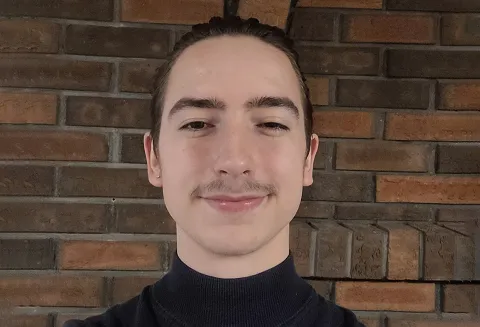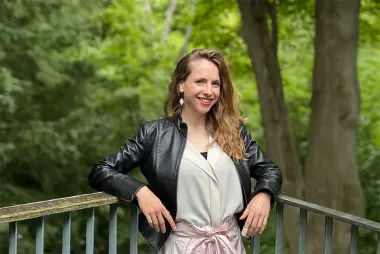"I do not pursue engineering for the betterment of my own life, but for the betterment of my Peoples."

Raven Caron
- Degree:
- Bachelor of Applied Science
- Program:
- Campus: Vancouver
- Year: 3rd year as of December 2023
Why did you choose engineering?
I always knew I wanted to be an engineer, I just didn’t make the connection to studying engineering until high school.
I loved designing and creating growing up: I would hide in my elementary library programming Arduino robots or building manual Lego car transmissions, and I built 3D printers after choir practise in high school and would 3D model speaker systems to be carved in woodshop. For me, engineering was, and still is, a way of thinking and a way of life far more than an academic choice or career.
How did you choose Integrated Engineering?
I chose Integrated Engineering because I wanted to delve deeper into my passions and understand the underlying principles of everything. Integrated Engineering has a lot of breadth and allows me to learn as much as I can about as many things as I can. The community of students in this program is very entrepreneurial and innovative. We share an interest in using engineering as a foundation, or stepping stone, for the work we might want to pursue in the future – whether that is starting a business, pursuing art, unifying engineering disciplines or any unique applications of the academics.
And what about extracurricular activities?
I’ve been involved in a few clubs at UBC, but one that I’m very excited about is an engineering design team that myself and a few peers recently started. Thunderbird Aerospace is the first Indigenous Engineering design team at UBC Vancouver, and one competition we’re focused on is hosted by NASA, the First Nations Launch. We’ve just received the wonderful news that our application, as the second Canadian team in the Wisconsin competition, was accepted. We are also heavily focused on building the university’s first liquid-propellant rocket. We hope to have it ready before next summer depending on the amount of funding and sponsorships we are able to receive. Designing a rocket requires an unbelievable amount of integration and engineering, but having the funds to develop it is an equally challenging milestone.
Thunderbird Aerospace First Nations Launch
Any reflections on what it means to be an Indigenous student pursuing engineering?
I was able to visit my reserve in Ontario, Sagamok Nation, for the first time since I was a baby in October. It was the most beautiful week of my life. One hundred people would eat meals together rain or shine. A few men would come back after hunting a moose and stew was prepared to warm everyone the next morning. No one asked "what do you study," or "where do you work," but asked "who are your relations." One man was shocked as he met me, explaining that I am identical to his nephew; he took a photo and said "the blood runs strong in you." Family is everything.
With that background, I do not pursue engineering for the betterment of my own life, but for the betterment of my Peoples. There are generations before me that fought for me to be here; I hope to pass the care on to the next seven.
Do you have a sense of what you’d like to do after graduation and where you’d like to direct your energy?
I am used to setting goals. What I am learning is that, unfortunately, there must be limits. I am a 20-year-old student partway through my degree; I know that the goals I will have when I’m 25 will be different from the ones I have today. They will be different again when I am 30. Nonetheless, limits or not, I’ve been reading dozens of books in philosophy, I’m very involved with art, I adore music and have been designing speaker systems for years.
My next project is crafting a traditional longbow and designing the technology I need to pursue my dream engineering business.
At the end of the day I just want to keep learning and creating as much as I can, for as long as I can, with as many as I can.




